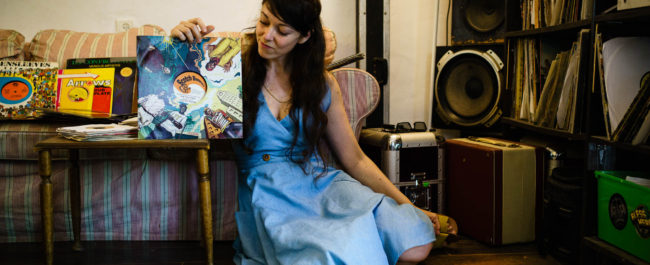Ellen G | My Lord Sound – Ramat Gan, Israel
sraeli selectress Ellen G may be part of a couple, one half of Tel Aviv reggae DJ/party My Lord Sound, but she has a style all her own.
While Ellen’s artistic roots go back to childhood, her reggae art has grown alongside her love of the music and its many sub-genres. From her home in Ramat Gan, a few miles outside of Tel Aviv, Ellen designs album covers, posters, flyers and more for reggae artists and her own parties under the banner My Lord Graphics.
Ellen has created album art for Lee Scratch Perry, Mungo’s Hi-Fi of Scotch Bonnet Records, Jahtari/Disrupt, Out On The Floor Records, Supertone Records, Manudigital, and many others. Her poster work has big upped Yellowman, Tippa Irie, Scientist, Sister Nancy and many more. Inspired by the bright, bold and eye-catching work of legendary reggae designer/illustrators like Limonious and Jamal Peete, Ellen’s own designs are colorful and innovative—unconstrained by adherence to a particular style but buoyed by a deep love of reggae music.
As My Lord Sound, Ellen and her husband Ron (aka Ranking Levy) have led the charge to bring rub-a-dub, rocksteady and other reggae from the ’70s and ’80s to Israeli ears since 2003. Through their parties, My Lord Sound have culled a small but mighty reggae scene, and brought multiple Jamaican legends to Tel Aviv—including Sister Nancy, Ranking Joe, U-Brown, Al Capone and others.
“Nobody played that type of music in Israel. There were reggae sounds and there were dancehall sounds. Nobody thought it would draw a crowd to play the rocksteady and DJ stuff from the ’80s and the ’70s. It was mainly a dub scene,” says Ellen. “And then we had this small gig, which was our first, which I actually played alone. And people loved it. The next time Ron joined me, and it was crazy.”
The breadth and depth of reggae music is the perfect match for an artist-DJ who loves experimenting with different styles and researching the lyrics, productions and designs of her favorite albums. A world away from its musical origins, Ellen G and My Lord Sound have staked a claim for the Israelites.
Hey Ellen! How long have you been collecting records?
Since 2003 [when] we started our sound system, which is not an actual, physical sound system, but we started to play records. Ron, aka Ranking Levy, is the MC (or DJ, as it is called in Jamaica) and I play the records. He started the collection when he was 14, maybe. Since then, we’ve collected records together.
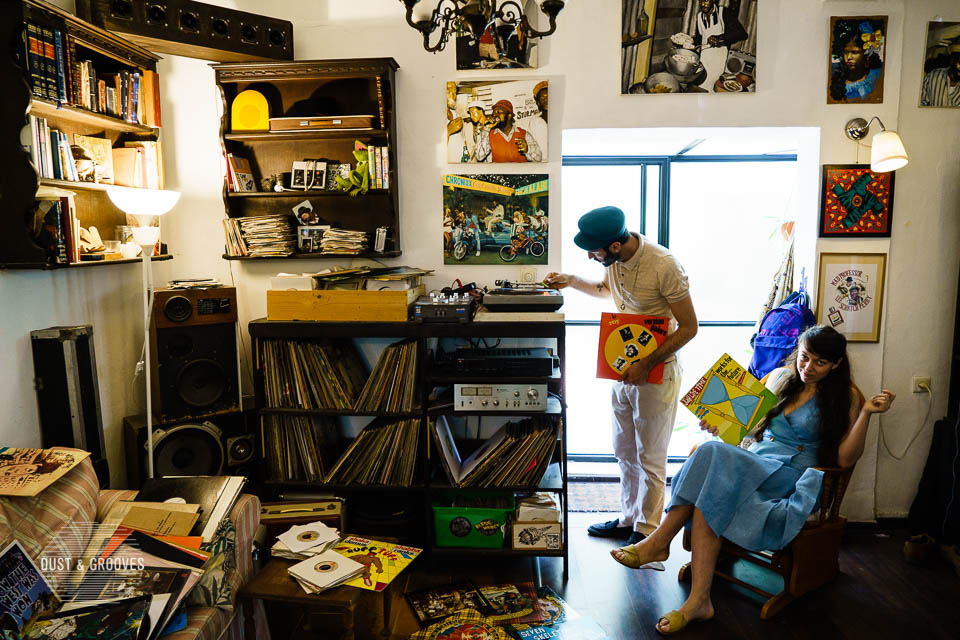 My Lord Sound HQ. Ranking Levy is holding the album Version Galore by the great U Roy, while Ellen G (Me) is Chillin with a one Riddim Album by Jah Life.
My Lord Sound HQ. Ranking Levy is holding the album Version Galore by the great U Roy, while Ellen G (Me) is Chillin with a one Riddim Album by Jah Life.
How did you get interested in reggae? Israel is quite a far way away from Jamaica…
That also is an influence of Ron. I used to like various music genres—more jungle, drum and bass, ragamuffin and ska. I thought [reggae] was only Bob Marley, then he introduced me to various branches of it and I fell in love. Rocksteady was the genre that hit me when we first met. My other favorites are calypso, rub-a-dub and the ’70s DJ style.
Why do those sounds appeal to you? Was what you were listening to growing up or in your early 20s set you up for it?
That’s a nice way to put it. I think drum and bass is really kind of a deconstruction or development of the main sounds of the type of reggae that I like. I really love the minimalistic but precise productions of the ’80s rub-a-dub style, and the lush sounds of the ’70s riddims as well. Reggae musicians throughout the years have the phenomenal ability to create the perfect combination of low and the high frequencies which allow the singer/DJ the exact space to fit in—as if nestling the vocals while highlighting the essence of it.
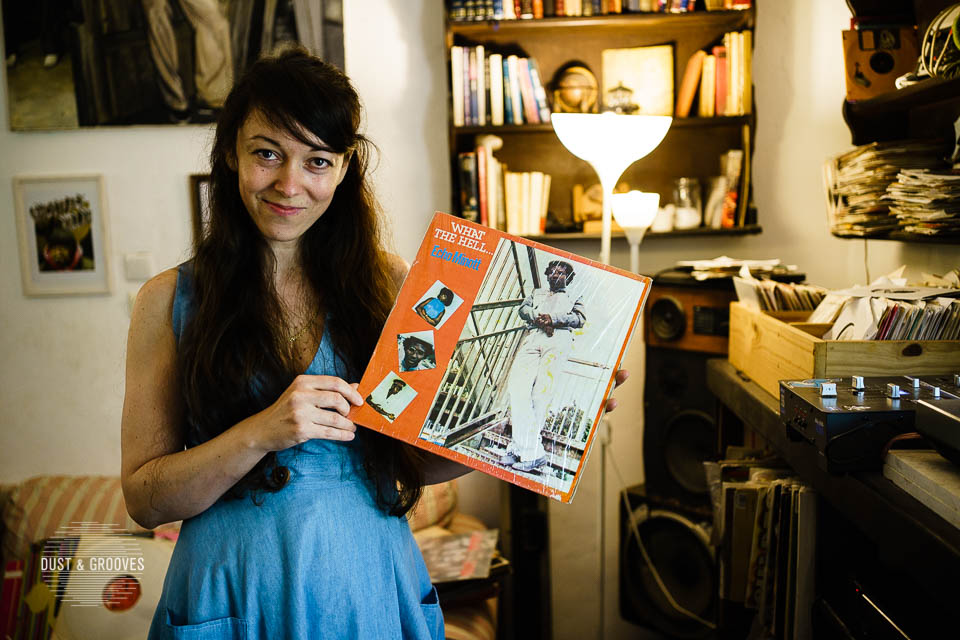 One of my favorite artists, Echo Minott, and I think this one is my favorite album. Every track is a masterpiece, I can listen to it on repeat. I love the style he sings in, it’s called Sing Jay, meaning half singer half DJ (an MC in JA). And the cover also is epic, in regards to the unique Jamaican ’80s design.
One of my favorite artists, Echo Minott, and I think this one is my favorite album. Every track is a masterpiece, I can listen to it on repeat. I love the style he sings in, it’s called Sing Jay, meaning half singer half DJ (an MC in JA). And the cover also is epic, in regards to the unique Jamaican ’80s design.
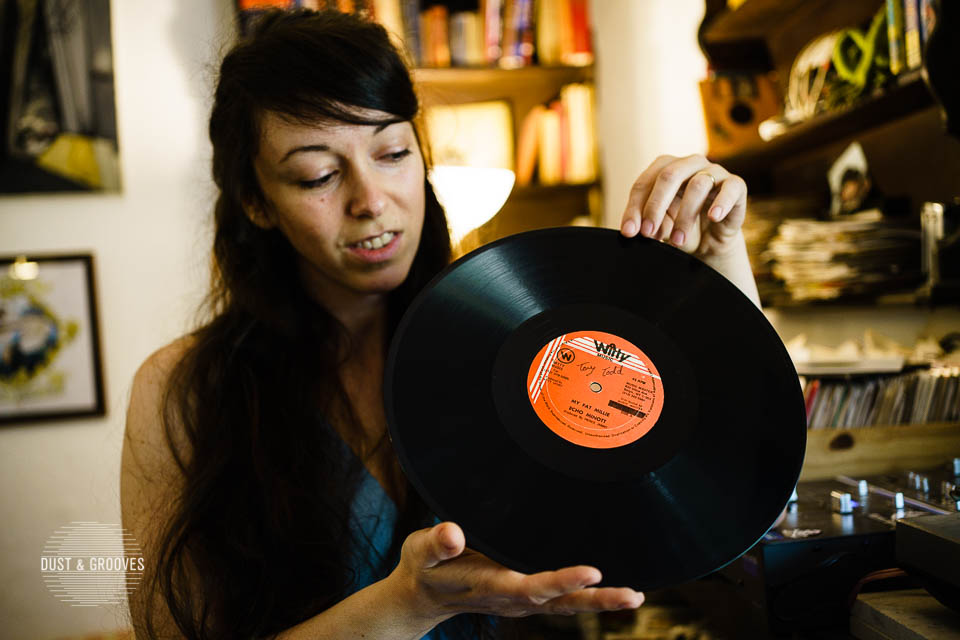 One of my favorite Echo Minott tunes, My Fat Millie, on the top Witty label. Love to play it in a dance and can listen to it at any time. As a 12 inch it is also of a real nice sound quality.
One of my favorite Echo Minott tunes, My Fat Millie, on the top Witty label. Love to play it in a dance and can listen to it at any time. As a 12 inch it is also of a real nice sound quality.
 Java Java Dub – Augustus Pablo. Love the Epic cover art! And of course the music- each track is a masterpiece. My favorite is track 6 on side B–gives you the best vibes ever.
Java Java Dub – Augustus Pablo. Love the Epic cover art! And of course the music- each track is a masterpiece. My favorite is track 6 on side B–gives you the best vibes ever.
Was that the sort of thing that you and Ron were playing out before the pandemic?
Oh, yeah. The reason we started playing is because nobody played that type of music in Israel. There were reggae sounds and there were dancehall sounds; nobody thought it would draw a crowd to play rocksteady and DJ stuff from the ’80s and the ’70s.
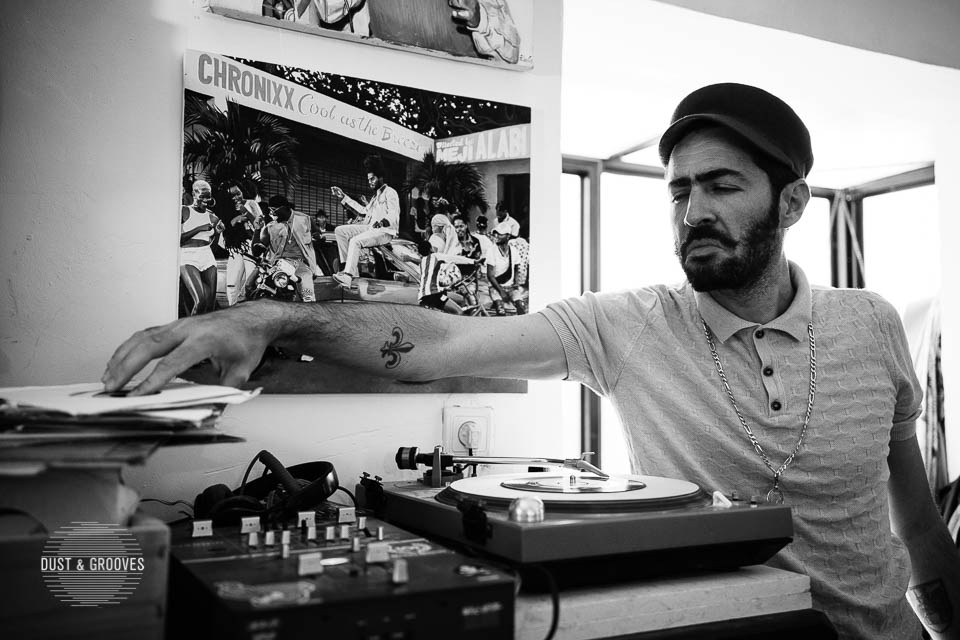 Ranking Levy selecting, with a serious look of great importance.
Ranking Levy selecting, with a serious look of great importance.
Play music Selecta!
When did you start the sound and has the scene grown as a result of your guys’ work?
We started in 2003 after we went to Jamaica together. Some people, friends, told us “No, there’s no way. You can’t just do it, you have to go to a DJ school to learn.” There was a DJ school here in Israel.
But we just started, and it worked out, playing strictly vinyl, 90% oldies, while Ranking Levy toasting on the riddim section. The scene really has grown after that. A few sounds started playing the same stuff, and even some guys ripped our playlist on mp3. Our dream was to bring the original godfathers of the DJ style; promoters used to bring the “usual suspects” kind of artists, but not the lesser heard of artists.
You selected for Ranking Joe, right?
I had the absolute honor! He was the first DJ we ever brought for a real soundsystem session. He was so good—it was three hours straight; a wild show. It was supposed to be one hour, or one and a half, but he kept on singing and DJing on the riddims. The most wonderful part was that he didn’t bring a CD with a set of riddims, like 99% of the artists do. He allowed us to run it the traditional way- to play tunes from vinyl so he can ride the riddim on the flip side.
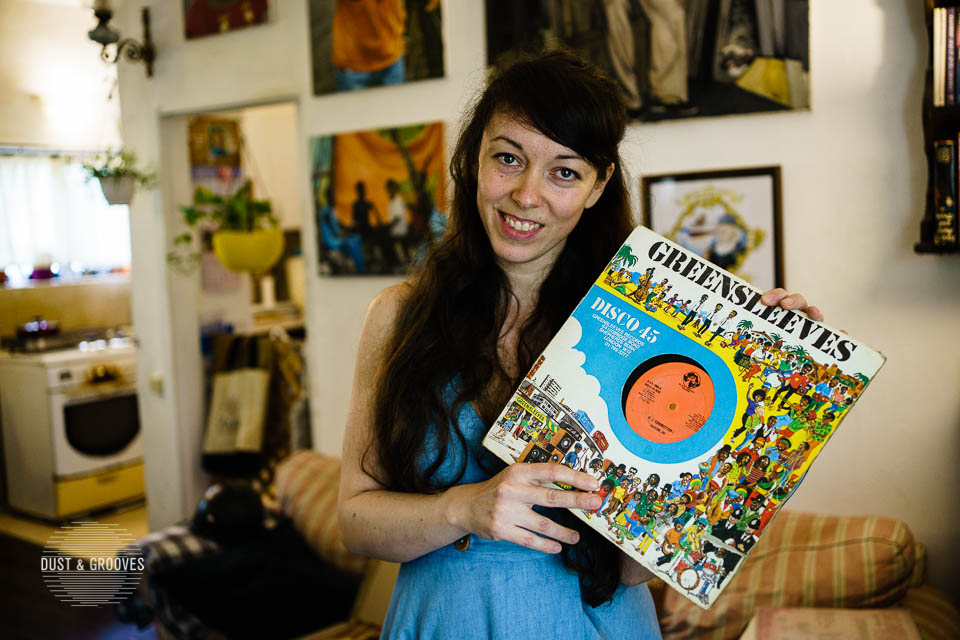 Displaying another epic 12’’ sleeve design by the legendary Tony McDermott with no less epic 12’’ record (although not by Greensleeves) of one of my favorite tunes. DJ Connection by Ranking Joe–the first ever foundation DJ I had the privilege to select for. So easy to get emotional browsing through the selection!
Displaying another epic 12’’ sleeve design by the legendary Tony McDermott with no less epic 12’’ record (although not by Greensleeves) of one of my favorite tunes. DJ Connection by Ranking Joe–the first ever foundation DJ I had the privilege to select for. So easy to get emotional browsing through the selection!
Who are some of the other DJ superstars that you hosted?
Everyone is a superstar for me. Sister Nancy was the one we hosted after Ranking Joe, and then several more times [afterward]—each time it was a spectacular performance. [We hosted] Al Campbell, Echo Minott, U Brown, Al Capone. Trinity, who sadly had just passed away recently, was an unforgettable performance. I was sure we were going to see him a lot more…
We hosted General Levy a few times. One of which was on my birthday, and then he decided to come for his birthday as well a year or two after that.
Each one of these shows is like a dream come true. To select for an artist that you grew up on and are a fan of; listening and then playing their songs in a dance. I get excited every time, like a fan who managed to get backstage.
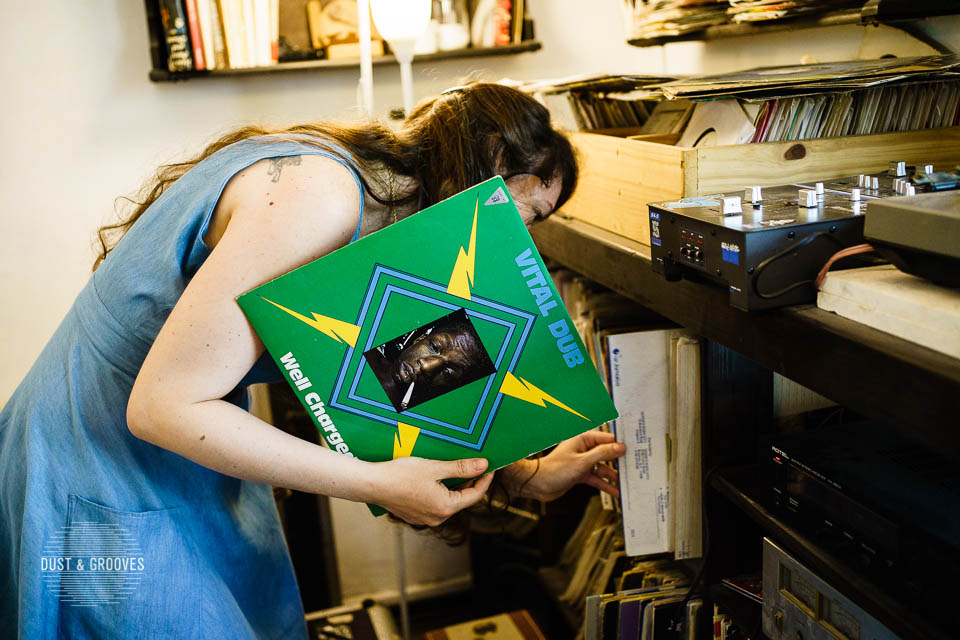 An epic dub album, by the legendary Well Charged label, Vital Dub album nails it every time there’s an MC that is ready to hold the mic in a session. I have played this one for some of the DJs we had the honor to host on our sound and it is always a pure niceness playing it.
An epic dub album, by the legendary Well Charged label, Vital Dub album nails it every time there’s an MC that is ready to hold the mic in a session. I have played this one for some of the DJs we had the honor to host on our sound and it is always a pure niceness playing it.
 This one is apparently a hardcore slackness tune by Ninjaman, which happened to be one of my favorite tunes to play in a dance, just cause the production is off the hook and the sound quality is just wicked.
This one is apparently a hardcore slackness tune by Ninjaman, which happened to be one of my favorite tunes to play in a dance, just cause the production is off the hook and the sound quality is just wicked.
 Don Drummond Greatest Hits. An epic (again) album by the mad genius. Even though there is a heartbreaking story behind his career, it’s just too hard not to separate the personal faults from his music.
Don Drummond Greatest Hits. An epic (again) album by the mad genius. Even though there is a heartbreaking story behind his career, it’s just too hard not to separate the personal faults from his music.
So tell me, what about Toyan’s How the West Was Won speaks to you?
I love his voice. And the vibes of his toasting as well. I have this theory that he is one of the lineage of DJs who have this deep and profound voice, and it seems like they inherit each other throughout the years.
In the ’70s it’s Trinity, then in the ’80s Toyan and General Trees, then Shabba Ranks; after him it’s Bounty Killer and Vybz Kartel. They all have this heavy, rough, rockstone voice and a style that seems as if it’s developed from the same root. And then you have some kind of parallel lineage of DJs like Supercat, Beanie Man and Shaggy. I can’t really explain that artistic bond; maybe I’ll develop a more thorough thesis on that someday.
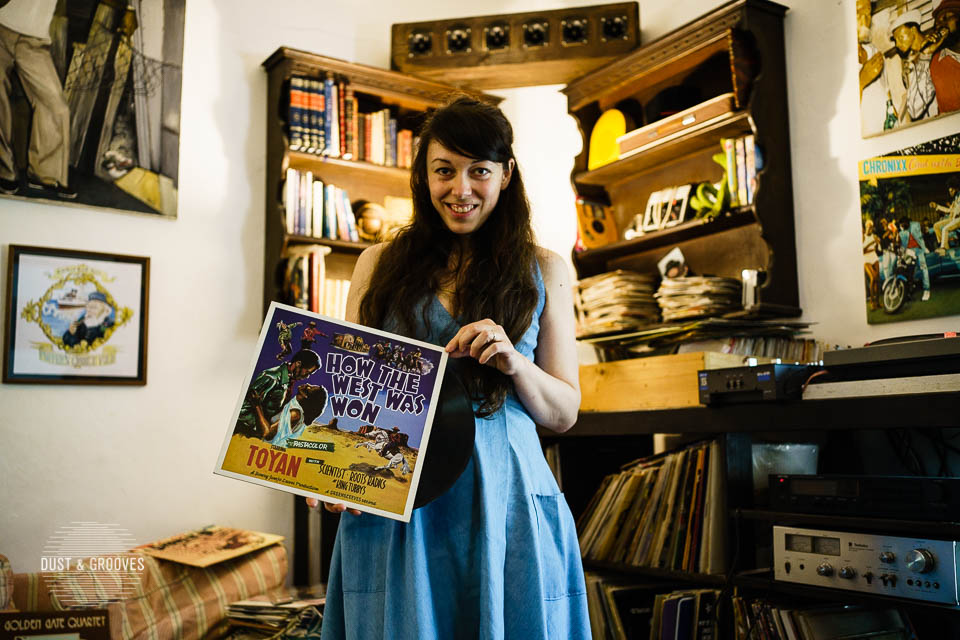 How the West was Won by Toyan, the DJ superstar from the ’80s. Love every track by this DJ, really, can’t think of one that wasn’t good. And the cover speaks for itself. Designed by Tony McDermott who is a long time inspiration and still is a prolific artist, who among others, shaped the face of Jamaican cover art.
How the West was Won by Toyan, the DJ superstar from the ’80s. Love every track by this DJ, really, can’t think of one that wasn’t good. And the cover speaks for itself. Designed by Tony McDermott who is a long time inspiration and still is a prolific artist, who among others, shaped the face of Jamaican cover art.
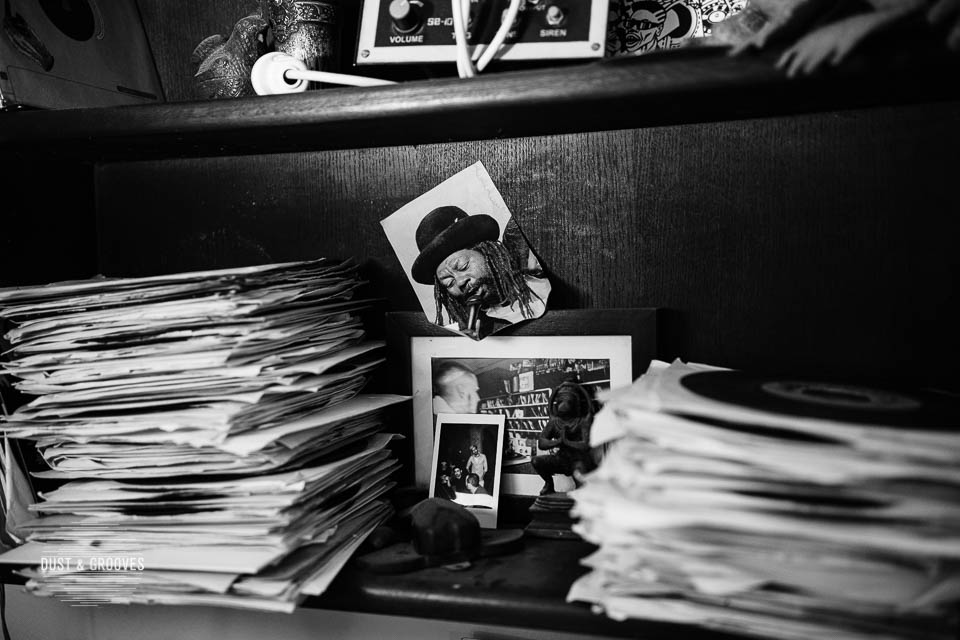 Bit and pieces, a mixture of the Iconic U Roy, Kermit’s legs, a dub effects box, 45’s and other stories.
Bit and pieces, a mixture of the Iconic U Roy, Kermit’s legs, a dub effects box, 45’s and other stories.
What do you like in a DJ? Are there any sort of vocal stylings or techniques that as a listener or as a DJ, really speak to you?
As a listener, I really like how a DJ plays with lyrics, how they ride the rhythm. I really like a DJ who unexpectedly changes the tempo or the lyrical pattern throughout the song, but still holds it tight. Also, I really love the hard patois and the unheard expressions. The more inaccessible it is, the more I like it.
I also really love the topics. Mainstream artists usually sing about feelings and personal emotional stuff, some social commentary maybe, but they’re obvious themes. In Jamaica, artists sometimes sing about topics that are really particular; it seems like it comes from mento and calypso tradition. For example, a song about waiting for a bus, which I find really refreshing, or about farming. Jamaican artists tackle these themes in this unique way, which is loaded with humor, even when the topic is not exactly funny. It can get really outrageous sometimes or totally abstract, which gives you this freedom to complete the meaning with your own set of associations. To be poetic about simple stuff is really inspiring for me, especially in my art.
With that in mind, tell me about how you got into calypso.
I think it just came along with playing reggae and exploring the roots of it. I can hear the melodies of calypso in Jamaican music throughout the years until today.
I just love minor key everything. I like minor key in melodies; Love the dark side of melodies, even though I’m not a fan of sad songs. The mento/calypso gloomy harmony is not depressing for me—on the contrary, it feels like the scary children stories that have gone too far sometimes. We usually play them when we start the dance, just to build the right spooky, minor key vibe!
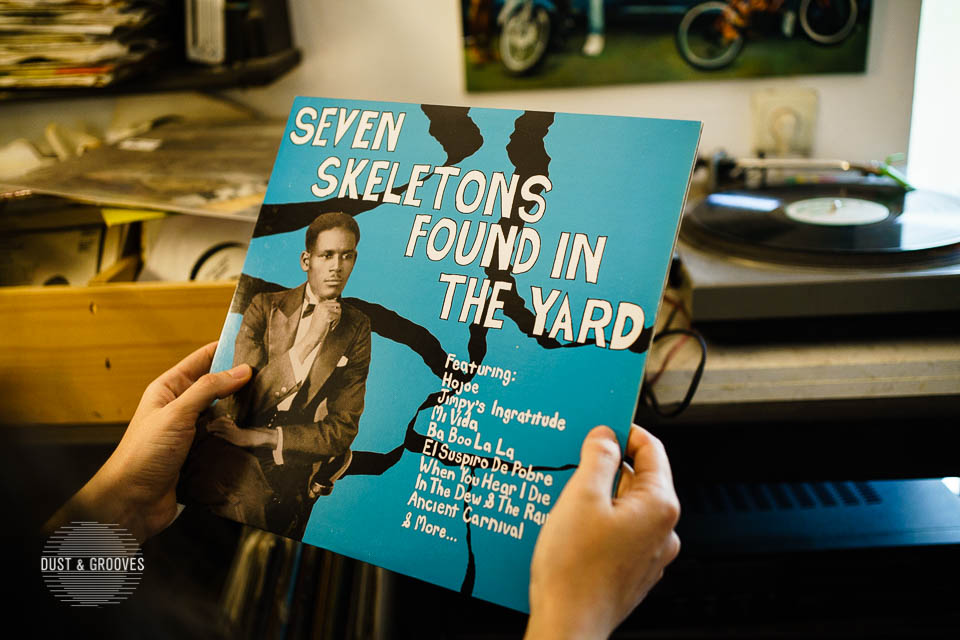 This one is a different genre, which happens to be one of my super favorites–minor key calypso (not sure if the term exists). Unlike the predominant calypso music, this category is more about the sad/spooky vibes- which can be derived from the album title. Anyway, for me the melancholy calypso vibes are something I can listen to all day and the rougher the quality of the recording, the better.
This one is a different genre, which happens to be one of my super favorites–minor key calypso (not sure if the term exists). Unlike the predominant calypso music, this category is more about the sad/spooky vibes- which can be derived from the album title. Anyway, for me the melancholy calypso vibes are something I can listen to all day and the rougher the quality of the recording, the better.
How do you fit gospel into a dance?
You can just be in the middle of a crazy, I don’t know, rub-a-dub/ragamuffin session. And when you put on the gospel, everybody likes it, whether it’s roots or dancehall fans. It never fails you. I don’t know how and why, but the crowd loves it every time.
 An ultimate gospel classic, the Golden Gate Quartet. Again, an album I love to listen to or play in a dance. Somehow there are tunes that can fit in any vibe. That one never fails to please the crowd.
An ultimate gospel classic, the Golden Gate Quartet. Again, an album I love to listen to or play in a dance. Somehow there are tunes that can fit in any vibe. That one never fails to please the crowd.
I don’t think I’ve ever been to a reggae dance where they were also playing gospel.
I wouldn’t say that the crowd always knows what the song is about, but seems like they are really into the melody. I doubt that the people in the dance get excited about the religious topics, rather they just admire the R&B feeling you can dance to. If you ask some young folks from the crowd what genre it was I am not sure that they would say, Oh, it’s gospel.
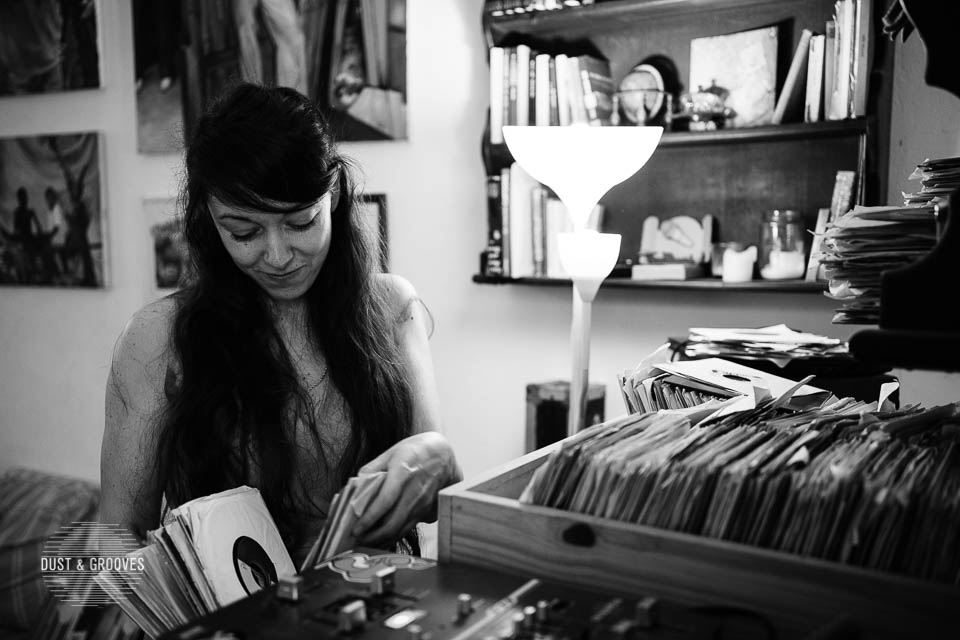
You’re also into music from the Seychelles, like Creole music. What else are you interested in?
The Creole collection happened because Ron’s mother went to Seychelles and got stuck there for three months. She went there in December 2020 when the sky had opened for a bit, planning to stay there for a week or so. Ron just told her “maybe if you are already there, you can just look for music.” She found some amazing stuff I’ve never heard of.
I love different genres. I love classical music. Lately, when I study I listen to classical music because I need music without words. I also started playing piano recently, since my son started playing.
 A Selection of Old Sega music from Seychelles. It is a unique style of Creole music, something relatively new to our collection.
A Selection of Old Sega music from Seychelles. It is a unique style of Creole music, something relatively new to our collection.
You’re really into that Nicodemus record. What about it do you like so much, and can you remember when you first heard it?
I can’t remember when I first heard it because it was a long time ago. Probably when I first met Ron. I really love the production of it. Nicodemus is great, he is amazing every time. It’s like the perfect everything: the production, the perfect cover, the perfect DJ, perfect themes as well. Love his lyrics and rhymes. It gives me really wicked vibes every time.
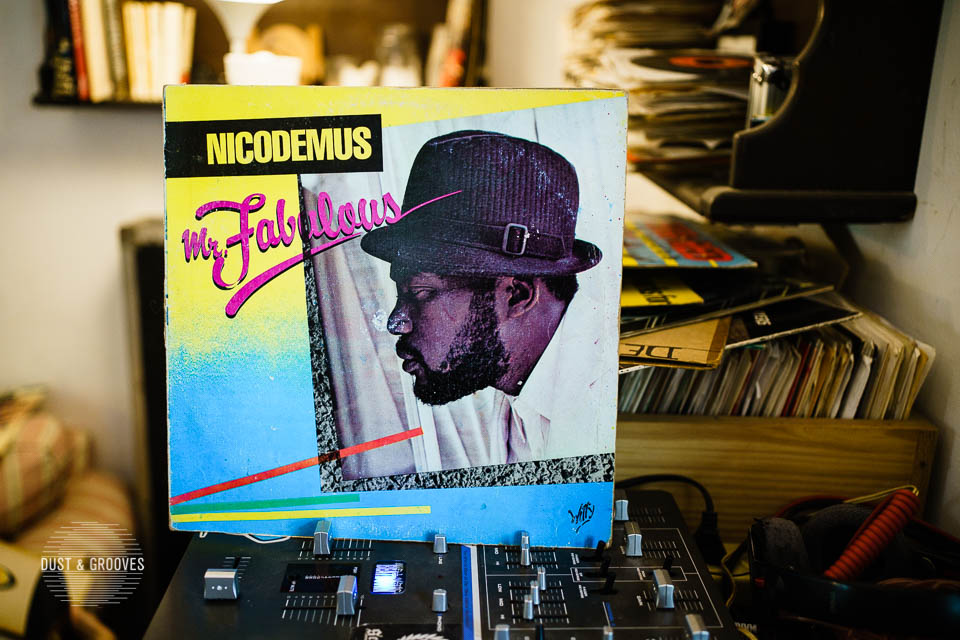 This one needs no introduction, but for those who don’t know yet–you better run and get your copy! This album can keep any dance for hours. You can just play it on repeat, and the crowd will be dancing. Never tried it yet, but I’m keeping that option.
This one needs no introduction, but for those who don’t know yet–you better run and get your copy! This album can keep any dance for hours. You can just play it on repeat, and the crowd will be dancing. Never tried it yet, but I’m keeping that option.
Is that your desert island record?
That’s a hard one. No, I think I would probably pick a compilation, a record with a live DJ session on it so I can enjoy various DJs and different styles. There is one that’s called A Live Session with Kilimanjaro … actually I’m not sure if it would be that specific one—there are too many. I have to think about one!
Let’s get into art then. So you obviously have an incredible affinity for and talent for sleeve and cover design. What appeals to you about the art on reggae albums?
I really admire how precise it is. When you see it from afar in the record store, you just have to pick it up and see what it is. It’s really important to have a cover design. Like when you pick a record you aren’t familiar with because of the cover, and you discover some amazing music afterwards. There are some hilariously horrible reggae record sleeves and there are some that I think are pure genius. I learn from it as much as I can and still discover new details: fonts, colors and composition. It’s so minimalistic sometimes, but so genius, which makes it so precise.
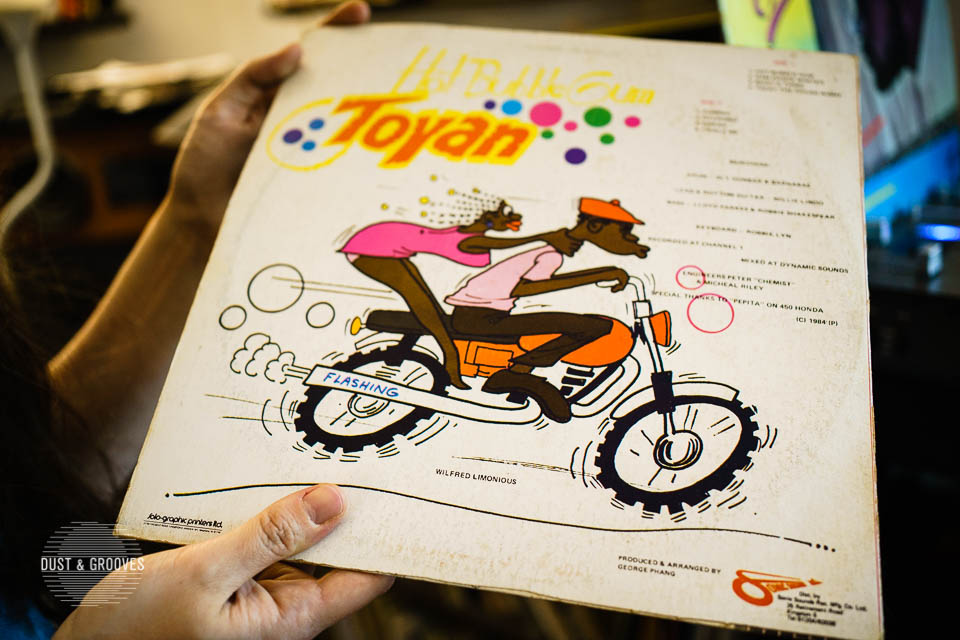 Toyan again. Another epic album, with an epic back cover drawing, by the epic (again) Jamaican illustrator Limonious, who founded what today illustrators like me try to recreate.
Toyan again. Another epic album, with an epic back cover drawing, by the epic (again) Jamaican illustrator Limonious, who founded what today illustrators like me try to recreate.
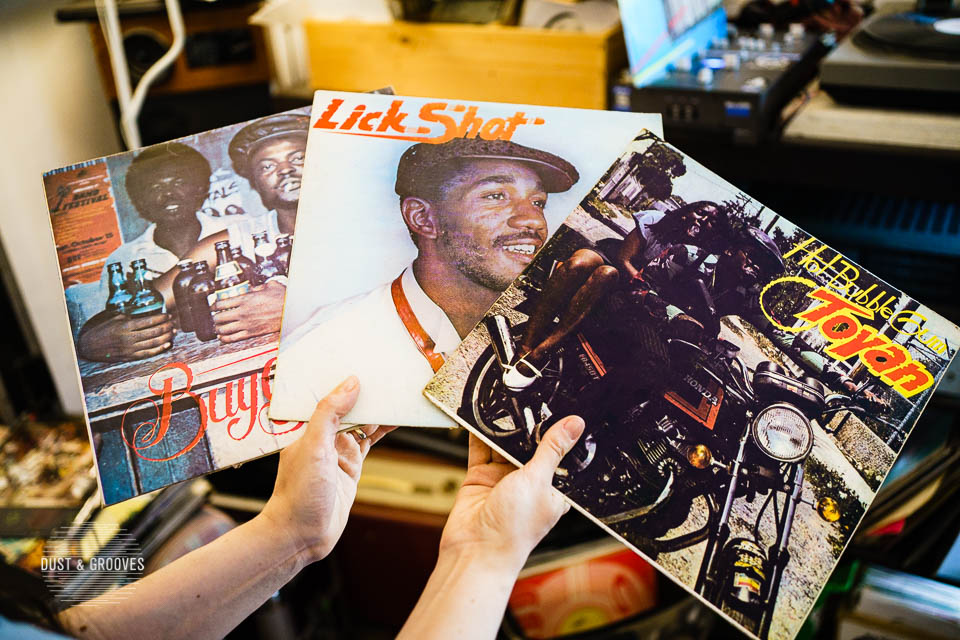 Few albums, each a masterpiece on it’s own, designed by illustration genius Limonious. The title fonts are his original, and now widely followed, creation.
Few albums, each a masterpiece on it’s own, designed by illustration genius Limonious. The title fonts are his original, and now widely followed, creation.
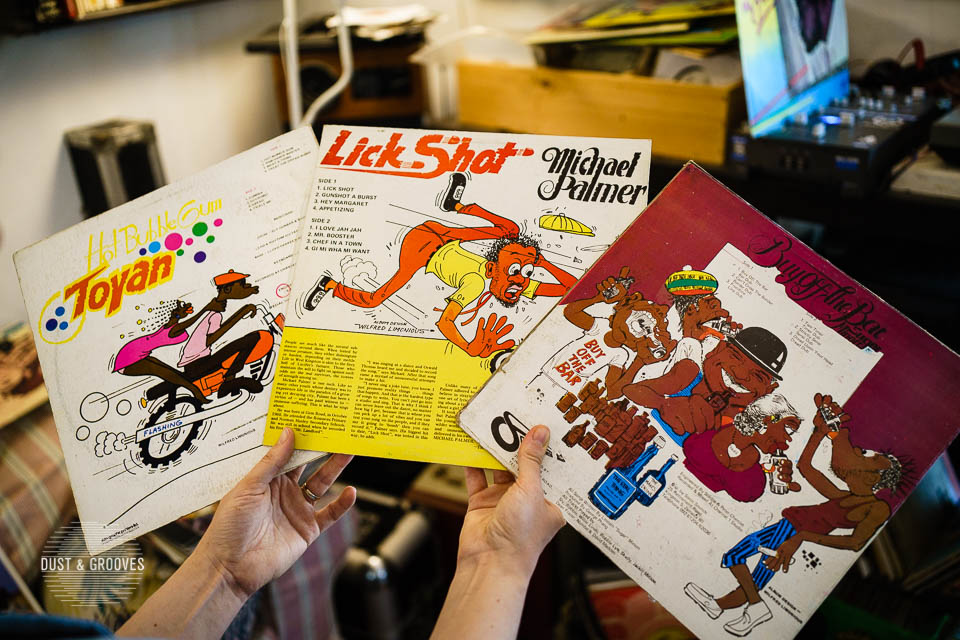 And these are the back sides. It is peculiar how the designer decided to include the drawings on the back cover, giving it no less attention than the front cover. Love it to the max!
And these are the back sides. It is peculiar how the designer decided to include the drawings on the back cover, giving it no less attention than the front cover. Love it to the max!
One of my greatest inspirations is a Jamaican poster artist named Sassafrass. Our friend was so lucky to meet him in Jamaica a few years back. He used to make these bold handwritten font posters, including some brilliant patterns and small drawings inside the font or beside it, using different types of printing. He’s a genius as far as I’m concerned and set a timeless trend.
When I first discovered his works, I used to just try to recreate each of his fonts and wanted to collect all of his posters. I don’t remember how I got exposed to his works, maybe some Japanese websites. He’s one of my biggest influences in the font field and poster art composition because he’s so clear cut, crisp and precise.
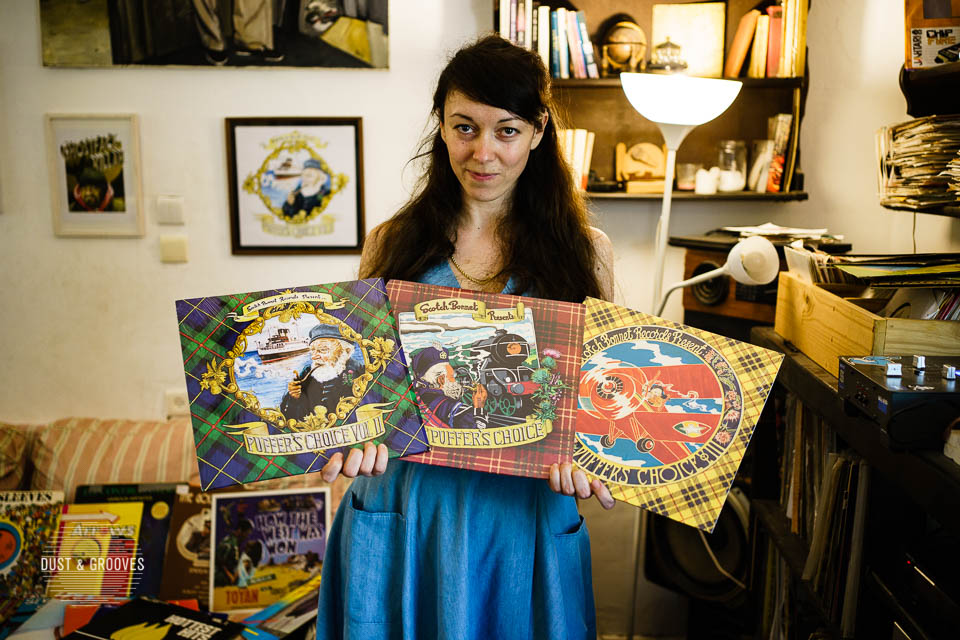 The puffers choice series I had the pleasure to illustrate. For Mungo’s Hi Fi, the Inexhaustible Super Crew outta Scotland.
The puffers choice series I had the pleasure to illustrate. For Mungo’s Hi Fi, the Inexhaustible Super Crew outta Scotland. 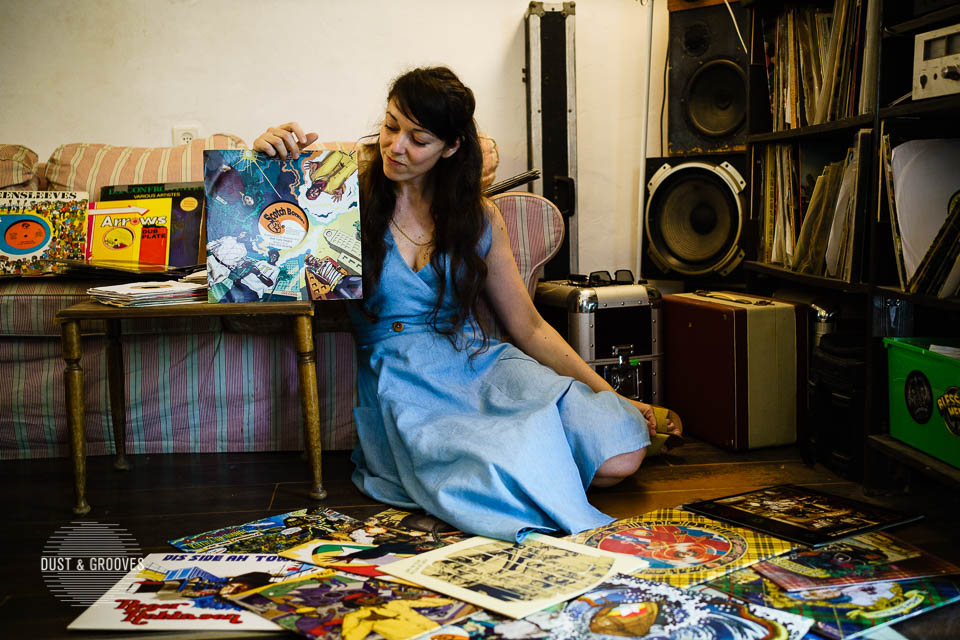 Relaxing amongst the albums designed by me, while admiring the first ever, 12’’ sleeve I had the privilege to illustrate, for the epic Scotch Bonnet records, Sugar Minott, Little John, Jah Thomas and my partner in crime- Ranking Levy. All perform their best on the Sugar Plum riddim. Love playing that one till today.
Relaxing amongst the albums designed by me, while admiring the first ever, 12’’ sleeve I had the privilege to illustrate, for the epic Scotch Bonnet records, Sugar Minott, Little John, Jah Thomas and my partner in crime- Ranking Levy. All perform their best on the Sugar Plum riddim. Love playing that one till today.
Precise is a really interesting term. I’m not an artist, but like, precision isn’t necessarily what comes to mind when I look at Toyan or Limonious. I just think about fun, or I think about cartoons.
When you view it from a realistic painting point of view, it’s not so precise. But Limonious, Jamaal Pete, Sassafras, when they depict some sort of a character or combine certain colors, it’s like it couldn’t have more of something and couldn’t have less. It’s exactly how it’s supposed to be and you wouldn’t want to change a small detail in it.
The themes of the artworks make you admire them even more. I think it’s what makes great art, the accuracy you feel even if it’s the roughest or rudest thing you’ve ever seen. When you’re not sure what’s stylish about it or why it fits so well together… but if you make the dots bigger, or if you change the shade of the pink, it will be completely different and it wouldn’t work so nicely. That’s the precision I’m talking about.
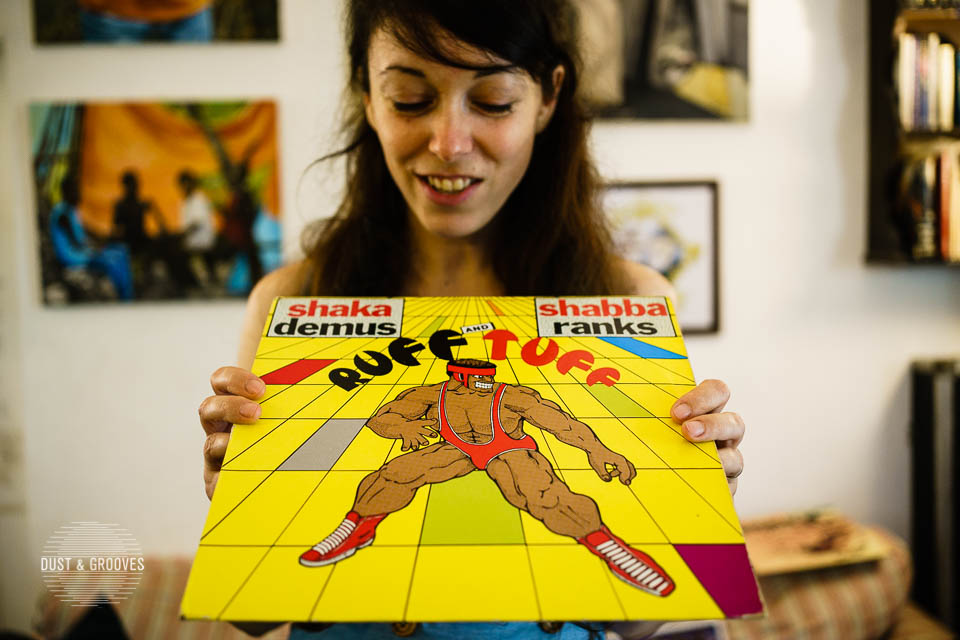 One of the iconic sleeve designs by the unforgettable Limonious. The album is exactly as wicked as the cover art!
One of the iconic sleeve designs by the unforgettable Limonious. The album is exactly as wicked as the cover art!
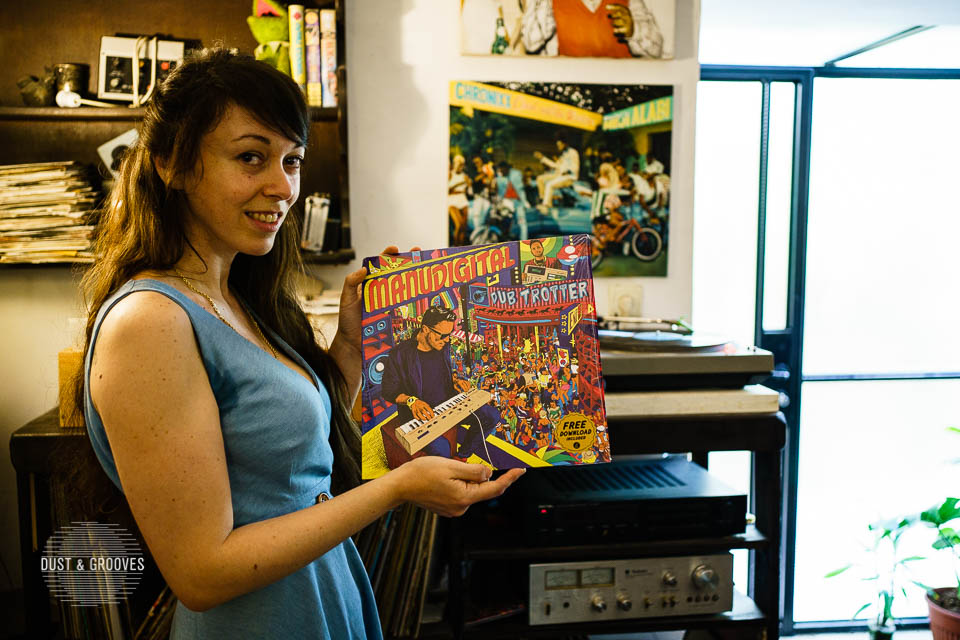 That one is by Manudigital, a Paris based dub producer. Love every track in it, love playing it (finally had a chance to play it at a radio session.) Can’t wait to drop tunes from it in a real dance! The cover was designed by me, which I had so much fun to do. Good times indeed!
That one is by Manudigital, a Paris based dub producer. Love every track in it, love playing it (finally had a chance to play it at a radio session.) Can’t wait to drop tunes from it in a real dance! The cover was designed by me, which I had so much fun to do. Good times indeed!
The artists that I follow, some are dead now but some are alive, like Tony McDerrmott who is active today and very sought after. Some sadly have passed away like Limonious and Jamaal Peet, who is one of the first who inspired me to draw an album sleeve. He’s more of a realistic painter; he’s done many covers for Yellowman and many other superstars.
Your style is so varied. How would you describe it?
I like to challenge myself. And I don’t like to stick to one style because, when you see artists who have this defined style like Limonious or Jamal Peet, you understand that they really had to stick to that one style and develop it because they had to establish it. But they already did so, and I just feel free to enjoy doing it, trying each one as I feel according to the record I draw for. I love to experiment with it and experience each of them.
 My design for Jahtari/Disrupt, one of my favorite contemporary producers. Love playing his tunes, whether in a dance or for my personal enjoyment.
My design for Jahtari/Disrupt, one of my favorite contemporary producers. Love playing his tunes, whether in a dance or for my personal enjoyment.
What’s the curious story behind this following album?
I did the cover for it when I had just gotten pregnant, so I used to get nauseous each time I saw it because I worked on it in the second or third month. The guy who had ordered it was an Italian guy from London and worked in the legendary Supertone Records shop alongside the label owner; they were really eager to reissue it because nobody had the original 12 inch press. I had a really tight schedule for drawing it, a weekend or so because we were supposed to fly to the UK for a couple of gigs, but when you are asked to do something for a label as prominent, you just can’t refuse it.
The next week or something we went to Sheffield for a gig with General Levy and during the stay had visited a little Jamaican owned grocery store. As usual in these situations, Ron had inquired with the owner about some records. He had kindly invited us to a basement packed with vinyl, where I was so lucky to find the original piece—that same 12 inch I had designed the cover for just a few days ago! We took it back home and sold it for more money than I did for making the sleeve. It was kind of a treasure hunt story!
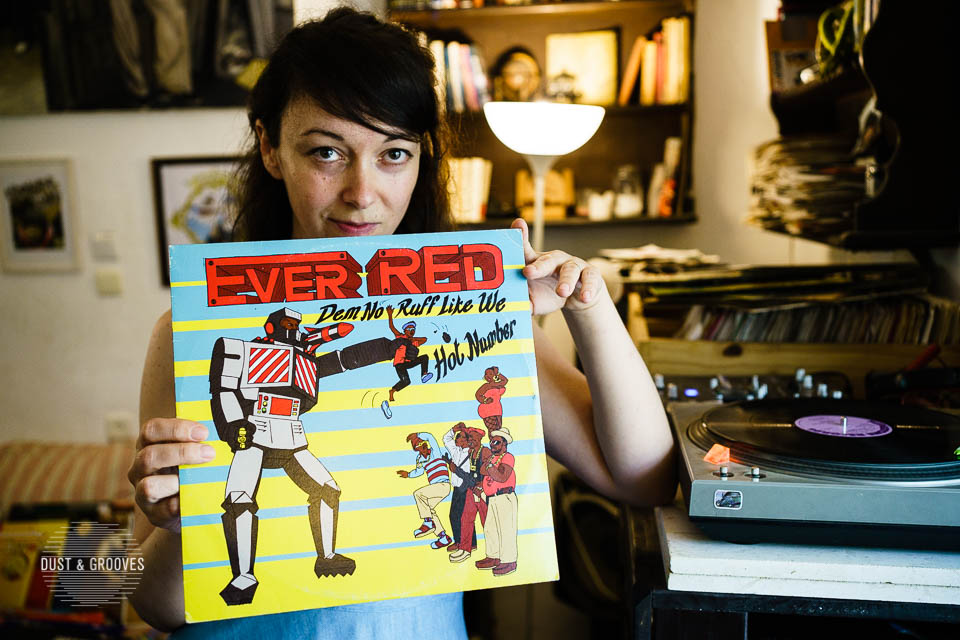 Two classic raggamuffin tunes by Ever Red, wicked DJ, on the Supertone records label.
Two classic raggamuffin tunes by Ever Red, wicked DJ, on the Supertone records label.
I’m surprised you didn’t keep it!
We maybe should have kept it, but we had the copies we got from the repressed issue and also we were young parents and needed the money.
I would love to learn more about your creative process, and how you made the illustration for this Serious Times double LP.
When I develop an album cover I work three ways: the artist, or producer who has an idea sometimes, but sometime just gives me the artistic freedom; Ron, who is my creative director and advisor, at times he has a solid vision of the theme, and sometimes we brainstorm together; or I just have a scene in my mind that I think would fit the vibe.
For the Serious Times cover, Mungo’s crew from Glasgow, one of our all time favorite massives, had this idea of an apocalyptic time of flood, when everything collapses into the storm, but the music survives in this kind of a soundsystem ark. [It was] all an homage to Hokusai’s famous painting, which was also the idea of the Mungo’s Hi Fi guys. When designing for them, I really experimented with a wide range of influences, starting with the leading Jamaican record sleeve artists and some artists who have nothing to do with record cover art, like Roy Lichtenstein or Mucha.
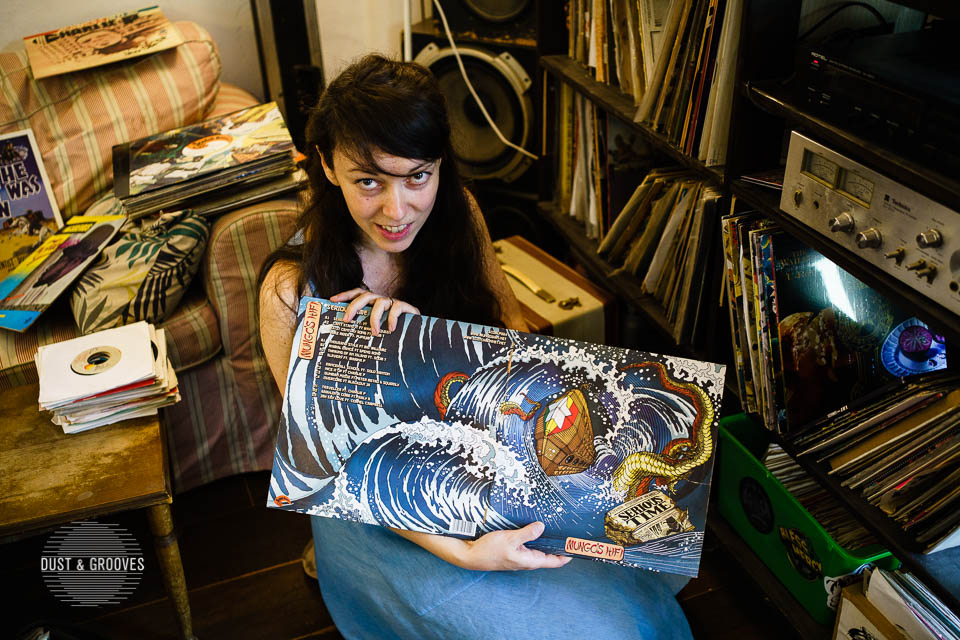 That’s the front cover illustration, also by me, for the compilation. Me, unconsciously matching my fingers to the waves motion.
That’s the front cover illustration, also by me, for the compilation. Me, unconsciously matching my fingers to the waves motion.
The spread of the sleeve depicts all of the artists recorded on the album, holding a soundsystem session inside of the Mungo’s ark with a mad crowd that includes some raggamuffin animals as well—a direct influence of Limonious, of course. The drawing style is an homage to Frans Masereel, a German artist, who we got familiar with from a series of books Ron’s grandfather had and used to browse through with us. He has a unique series of woodcuts which look like a white on black painting, and because it was a scene that took place in the darkness of an ark, I thought it would fit the atmosphere nicely.
 Displaying the gatefold illustration made by me for Serious Times double LP issue, by the epic Mungo’s Hi Fi, the Dub magicians outta Glasgow.
Displaying the gatefold illustration made by me for Serious Times double LP issue, by the epic Mungo’s Hi Fi, the Dub magicians outta Glasgow.
The breadth of your style is really really cool. Like the Ras Records album with U-Roy toasting on some Bob Marley songs is in a totally different style. Why was that one one of your favorites?
When I did it I had really enjoyed experimenting with watercolors and was absolutely delighted to try to make it look like a Renaissance painting. The producer who had ordered had referenced the Rolling Stones’ Beggars Banquet album sleeve. I think it’s one of the most detailed paintings I have ever done, and I’m really satisfied with how the portraits came out. I really like the atmosphere on that one.
I really enjoyed working on the search for references, and the painting is full with small symbolic details that I could weave in. For example, there is a star of David wooden pattern on the glass doors of the closet in the background, which refers to Bunny Wailer’s Solomonic label. There’s a lion cub under the table and the fruits have their references. If you look close you’ll find more, maybe some which I haven’t thought of even and added unconsciously!
 The back cover illustration I did (one of my favorite works) for the newly issued LP, by Ras records, outta the US. The DJ Originator, Legendary Father U Roy toasting on some of the epic Bob Marley songs.
The back cover illustration I did (one of my favorite works) for the newly issued LP, by Ras records, outta the US. The DJ Originator, Legendary Father U Roy toasting on some of the epic Bob Marley songs.
I’d love to learn more about the cover illustration you did for Trilion, the Israeli collective.
The collective is Ron’s initiative. A futuristic rub-a-dub collective of DJs. All of them, except Ron, used to DJ on the sound called Easy Rider from Haifa. When we started My Lord Sound, we were really alone playing that style of Jamaican music. I think they invited us to play in Haifa, and we saw these fellows holding the mic real proper, playing the records we love and could only hear in Jamaica. It was really heart rending.
On this Trilion record are all of the MCs who used to hold the mic on that sound: General G, Guma Ranks, Mentor Irie, Sharon aka Miss Red, and Yota B. The producers are 3421, a super talented duo including Deso on the drums, and Pupa Mellow on synth and production. On the cover I had portrayed each of them in a mixed composition where every one depicted in the scenario that appears in his/her song.
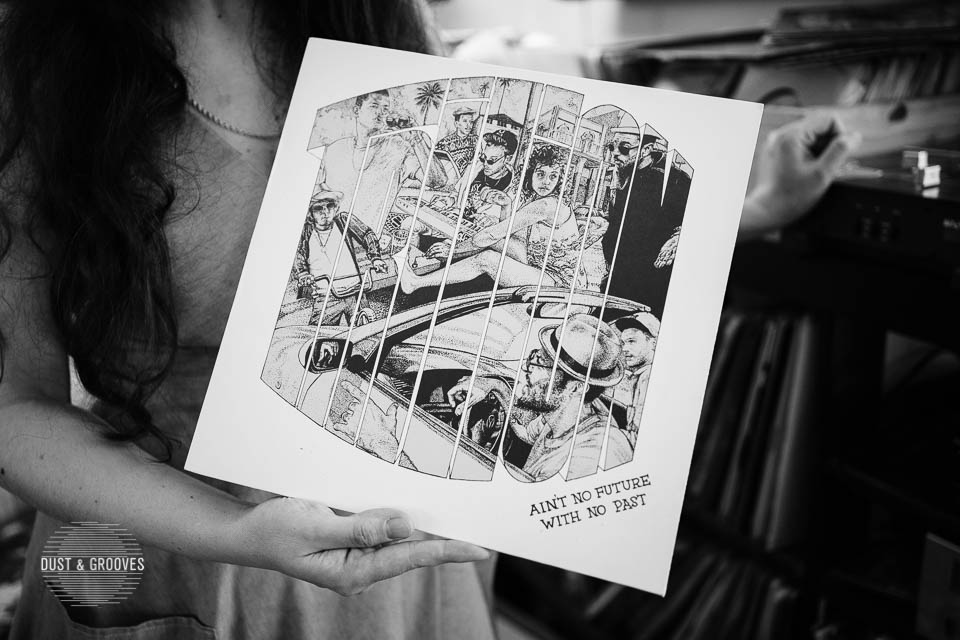 Another cover illustration by me for the highly talented, rub-a-dub collective – Trilion, originated in Israel, founded amongst others by Ranking Levy, my one and only. Issued by Scotch Bonnet records- despite me being totally non objective- one of my favorite LPs to listen to, especially while driving, and to play in a session.
Another cover illustration by me for the highly talented, rub-a-dub collective – Trilion, originated in Israel, founded amongst others by Ranking Levy, my one and only. Issued by Scotch Bonnet records- despite me being totally non objective- one of my favorite LPs to listen to, especially while driving, and to play in a session.

Has art influenced your collecting at all?
I’m not sure if it influenced the collection, but it just goes together. Some good cover art, you usually have a good album under it. I think it’s an additional value and not a reason. You just enjoy having pretty records and if you can get the vibes of the music while exploring the cover, you can’t ask for more.
Back to Trilion. Do you think that there’s anything unique about reggae that’s created in Israel? And why is it particularly resonant there?
Maybe there is this social climate of being in some kind of a crazy, unstable environment. A little similar to Jamaica maybe, where this sense of unpredictability is the routine. Even though Jamaica doesn’t have a constant war situation, they have this inter-social craziness going on; all the violence involved when you have loads of ammunition available and gangs super involved in the everyday environment.
So you have this absurd situation where you can suddenly die for some obscure reason. And then you have the people who created that crazy violent environment, and you have the people who want to create in it. So I think you can make a parallel [to Israel] there.
Jamaican artists who come here always say that they feel really at home. Maybe it’s because of the Bible related locations, but I think they can really connect with the people; they always emphasize this more friendly connection.
What’s going on next for you? Are you working on any projects that you want to mention?
We will start coming back very slowly with the sound. Ron’s birthday was our first real dancehall session since the pandemic hit. It was on a Sunday, which is like Monday everywhere else, and was really lively. And then we have a dance on Saturday, which is kind of an obscure oldies dance, which is a takeoff of the dances the Jamaican community holds in New York, where you can just play Celine Dion, all of a sudden.
I think Ron is already in touch with some artists he wants to invite here. But we’ll have to see how it all works. Regarding my work, I fortunately was busy all that time, because, surprisingly, people still released records. I just made my first poster since the lockdown era started for a place in London that I used to work with regularly.
I recently finished a cover that is a tribute to record shops and was supposed to be released on Record Store Day before the pandemic. It’s finally released now: a dub album by the Tuff Scout label, based in London, depicting the prolific Out on the Floor record store, owned by the label producer.
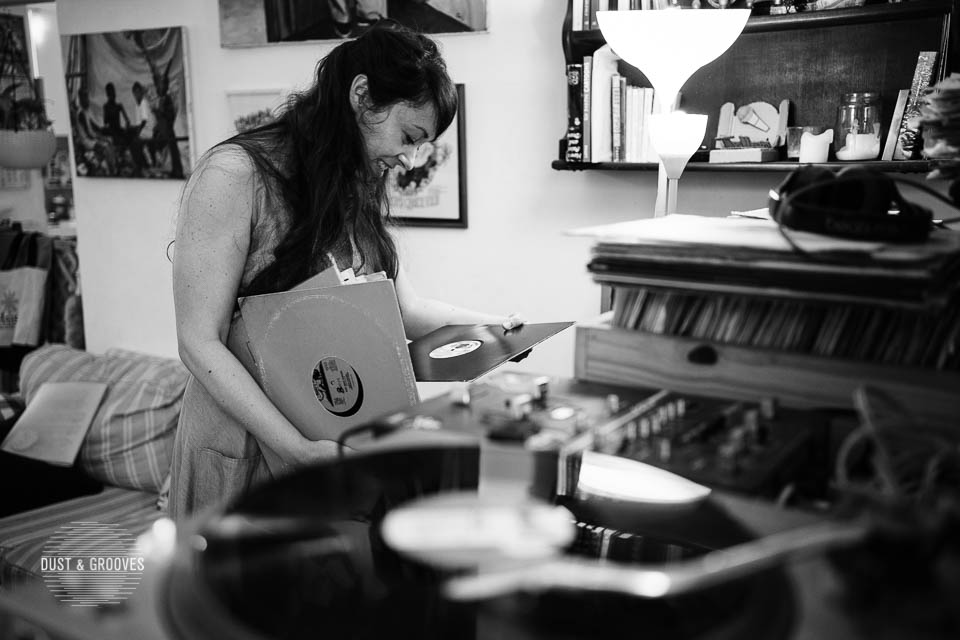
How has your collecting changed or evolved at all over the pandemic?
I can say that throughout the pandemic when we bought more from the record stores in Israel. Usually we just order it online, keeping in mind the next session we have. When you don’t play in a dance for a while, you kind of feel free to buy different genres that you wouldn’t necessarily aim for as a dancefloor hit.
Yeah. Which is kind of refreshing. Right? Like, play a little bit more for yourself. Do you have any favorite local record stores?
Of course. One is Hod Hamahat and the other is Nuweiba. There is one big record shop which used to be a video cassette library, Third Ear. I used to rent movies there as a teenager.
Hod Hamahat goes back a long time and its owner sadly passed away recently. But a couple of young folks took it to the next stage and continued its tradition, which is really nice. Nuweiba is a bar as well, so it’s lovely to chill there while browsing through the record collection. Both places hold record playing sessions regularly, so there’s always good times while visiting there.
Nuff respect all the record shop owners all over the globe!
Who would you like to see next on Dust & Grooves ?
There are so many, it’s hard not to miss out on someone! Maybe I can narrow it down by picking the collectors who I know for certain have a lot of records I’d enjoy personally. When I dig through records, I am mainly interested in discovering new tunes that would make me fall in love with and melodies that would blow my mind and less in the aspect of how rare, or costly it is. So I would pick three collectors: Kalbata – he is a brethren and each time at a dance we keep together he manages to surprise with the next killer tune. Albert “Ilawi” Malawi Johnson – the selector for Jah Love Muzik – one of my favorite sounds. That would be a piece of history and so many mystery magical tunes revealed. Natty Bo – we hosted him for a DJ set a good couple of years back (probably around eight or ten already!) and I was overwhelmed with the amount of mad tunes he played! I really hope we’ll be able to have these kinds of sessions again soon.
Ellen G:
Illustration portfolio (amazing!)
My Lord Sound:

